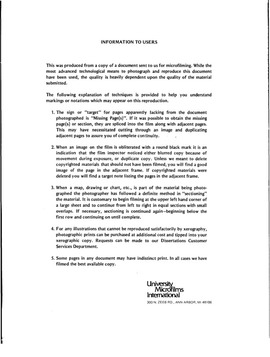| dc.contributor.author | Tsay, Siuh-chun, | en_US |
| dc.date.accessioned | 2013-08-16T12:28:30Z | |
| dc.date.available | 2013-08-16T12:28:30Z | |
| dc.date.issued | 1982 | en_US |
| dc.identifier.uri | https://hdl.handle.net/11244/4963 | |
| dc.description.abstract | The experimental results indicated that the recovery of the residual oil is mainly dominated by the Jamin Effect, and the selective plugging of the flooded pore paths provides the necessary mechanism to overcome the Jamin Effect which prohibits the residual oil from moving. Results also showed that under proper conditions, the dispersed clay particles and the alkaline-oil emulsions formed in-situ can effectively plug the flow paths of smaller capillaries, while the nitrogen bubbles created from the nitrogen injections can successfully plug the flow paths of larger capillaries. | en_US |
| dc.description.abstract | A mathematical expression, which relates the injection pressure gradient and the capillary number to the specific surface area per pore volume, was developed and used as a theoretical basis for interpreting the recovery mechanisms encountered in removing the residual oil. | en_US |
| dc.description.abstract | To interpret the mechanisms encountered in recovering the residual oils, different combinations of the processes mentioned above were applied on each new core. The recovery mechanisms were then examined with the context of the effect of the pore size distributions, as indicated by relating the injection pressure gradient and the capillary number to the residual oil saturation. | en_US |
| dc.description.abstract | In the specially designed experiments, consolidated Berea Sandstone cores were saturated with brine and flooded with a light oil and the waterfloods were conducted until the waterflood residual oil saturations were stabilized. Different improved oil recovery processes including alkaline injection, acidic oil slug injection, and intermittent nitrogen injection then followed. | en_US |
| dc.description.abstract | This study intends to investigate the recovery mechanisms involved in the use of the modified alkaline-nitrogen injection as one means to improve the oil recovery for a waterflooded oil reservoir. | en_US |
| dc.description.abstract | When the temperature increases from 78(DEGREES)F to 150(DEGREES)F, it was found that in the recovery processes we used, the recovery mechanisms for removing the waterflooded residual oil shifted from capillary force domination to viscous force domination. It was also found that even under such a different recovery condition, the alkaline-nitrogen injection process still yielded the optimal recovery. | en_US |
| dc.format.extent | viii, 130 leaves : | en_US |
| dc.subject | Engineering, Petroleum. | en_US |
| dc.title | An experimental investigation on the use of a caustic-nitrogen injection process in a waterflooded oil reservoir. | en_US |
| dc.type | Thesis | en_US |
| dc.thesis.degree | Ph.D. | en_US |
| dc.thesis.degreeDiscipline | Mewbourne School of Petroleum and Geological Engineering | en_US |
| dc.note | Source: Dissertation Abstracts International, Volume: 43-02, Section: B, page: 0500. | en_US |
| ou.identifier | (UMI)AAI8215797 | en_US |
| ou.group | Mewbourne College of Earth and Energy::Mewbourne School of Petroleum and Geological Engineering | |
